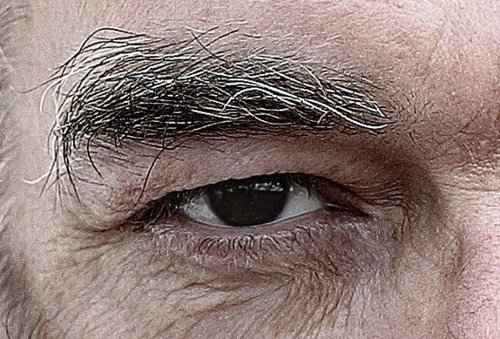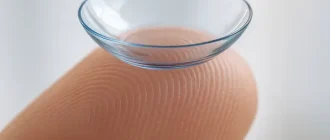CRT (or Orthokeratology) is an alternative that doesn’t involve surgery or daytime contacts for fixing nearsightedness. This option requires wearing custom-made hard contact lenses at night, which alter the shape of the cornea, leading to clear vision during the day once they are removed.
When Is It Prescribed?
CRT is a viable option for those who have mild to moderate myopia (up to – 6.00 units) and slight farsightedness (up to +4.00 units), along with or without astigmatism (up to -1.75 units). Correction of presbyopia by focusing on one eye for near vision and the other for distance vision is possible. It is essential to have a comprehensive eye exam and consider the guidance of an eye care expert before deciding to go for CRT.
CRT lenses are recommended after analyzing the eye examination and evaluating the cornea’s curvature using the topographical mapping of the eye’s surface. Once the patients start using the lenses regularly, the corrective impact of the lenses continues for almost 72 hours. CRT is the most advanced orthokeratology treatment approved by the FDA for expedited and overnight treatment. Furthermore, CRT certification is mandatory for the practitioners who prescribe it.
When Can You Expect a Positive Effect?

Patients usually notice a quick enhancement in their eyesight in the initial few days of treatment and attain almost their best eyesight after 10 to 14 days. While undergoing the initial treatment, patients might have to wear their corneal refractive therapy contact lenses for a part of the day or temporary soft lenses of various prescriptions for visual correction.
Possible Side Effects
Wearing corneal refractive therapy contact lenses carries a similar level of risk as any other type of contact lens. However, patients who choose this type of lens can see clearly while wearing them and many are able to achieve good vision during the day, even able to read letters on an eye chart.
Cost
The price of Corneal Refractive Therapy (CRT) treatment typically falls between $1000 and $2000 for both eyes, though in certain scenarios, it can amount to as much as $4000. CRT has a variety of benefits, including being a non-surgical option and serving as a great alternative to daytime contact lenses.





